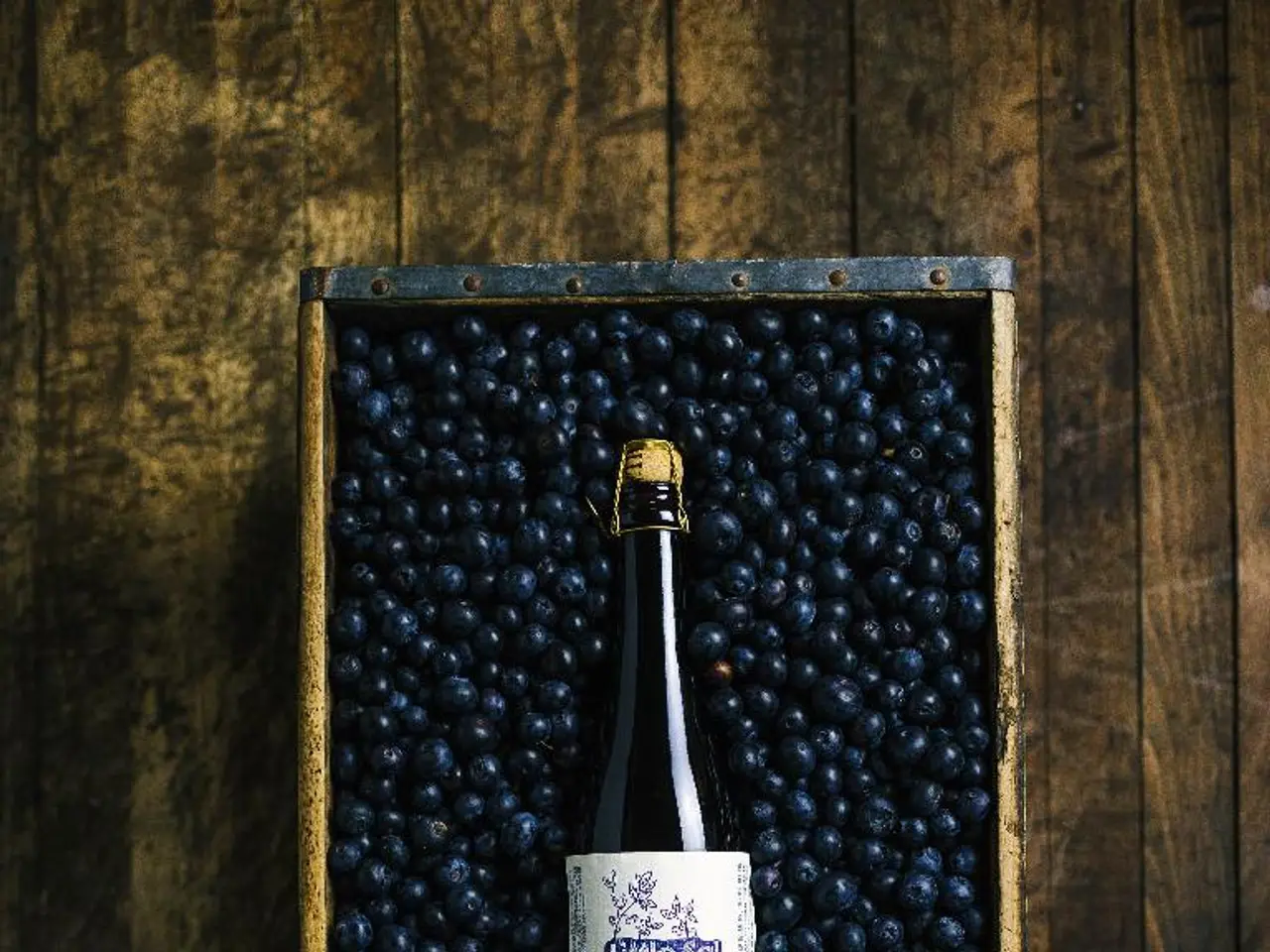Guide to Cultivating, Harvesting, and Capitalizing on the Amazons' Superfood: Acai Berry
In the heart of the Amazon rainforest, a palm tree known as Acai (Euterpe oleracea) thrives, becoming a preferred choice for eco-conscious brands seeking sustainable and plant-based alternatives in cosmetic formulations. This tropical floodplain palm requires a specific climate and soil composition to flourish, making it a unique and valuable resource.
Climate and Habitat
Acai prefers a tropical climate with high humidity, consistently warm temperatures year-round, and significant annual rainfall, often in floodplain or flood-prone areas. The palm thrives in warm temperatures with abundant rainfall and requires wet, swampy, or flooded conditions[1].
Soil Preferences
The soil for acai palms should be nutrient-rich, acidic, and organic, with good water retention but not waterlogged conditions for extended periods. Acai thrives in floodplain soils with good water retention but not waterlogged conditions for extended periods[1].
Cultivation Practices
Acai palms are often cultivated in floodplains or areas with periodic flooding to mimic their natural habitat conditions. They are propagated via seeds with seedlings grown in nurseries before transplantation. The palms require ample spacing as they can grow tall and cluster to produce fruit. Harvesting involves frequent collection of small dark purple berries that grow in large bunches[1].
Health Benefits and Applications
Acai berries are a rich source of essential micronutrients such as vitamin A, vitamin C, calcium, magnesium, and potassium. They provide dietary fiber that supports digestion and maintains healthy blood sugar levels. Acai berries contain essential fatty acids, including omega-3, omega-6, and omega-9[1].
In hair care, acai oil is used to enhance shine, reduce frizz, and nourish the scalp. Acai berries are also used in cosmetic and industrial applications, such as skincare and hair care products, due to their rich concentration of antioxidants, essential fatty acids, and phytosterols[1].
Acai berries are rich in antioxidants, particularly anthocyanins, making them valuable in various culinary applications, including acai bowls, smoothies, juices, energy bars, ice creams, and plant-based yogurts. The berries are harvested manually using traditional methods, and given the perishable nature of acai berries, they are processed promptly after harvest to preserve their nutritional value[1].
Sustainable Harvesting and Cultivation
Harvesting is often done twice a year, aligning with the fruiting seasons. The acai berry's cultivation requires specific climatic conditions and dedicated care, but the rewards are manifold. The acai berry's cultivation is essential to preserve its nutritional value and ensure a sustainable supply for cosmetic and culinary applications[1].
In skincare, acai oil, extracted from the fruit's pulp, is used for its moisturizing, anti-aging, and anti-inflammatory properties. Organic fertilizers, such as composted manure, can be applied to enhance soil fertility for acai palms. Regular maintenance for acai palms includes weeding, mulching, and ensuring adequate water supply. Acai palms typically begin fruiting 3 to 5 years after planting[1].
The acai berry's cultivation, harvesting, and use in cosmetic and culinary applications offer numerous benefits, making it a valuable resource for eco-conscious brands and consumers alike. The tropical floodplain palm, with its unique climate and soil requirements, is a testament to the beauty and importance of biodiversity in our world.
[1] Source: Various research studies and expert opinions.
Science and health-and-wellness trends increasingly spotlight Acai, a tropical palm from the Amazon rainforest. Acai palms thrive in flooded, nutrient-rich, acidic, and organic soil, often in floodplain or flood-prone areas with high humidity, consistently warm temperatures, and significant annual rainfall[1]. In lifestyle and food-and-drink choices, acai berries, rich in essential micronutrients, dietary fiber, and antioxidants, can be found in various culinary applications, such as acai bowls, smoothies, and energy bars[1]. Fitness-and-exercise enthusiasts may also encounter Acai oil in skincare products as it is used to enhance shine, reduce frizz, and nourish the scalp[1]. By supporting sustainable harvesting and cultivation practices, eco-conscious brands can contribute to the preservation of this precious resource for both cosmetic and culinary applications.




